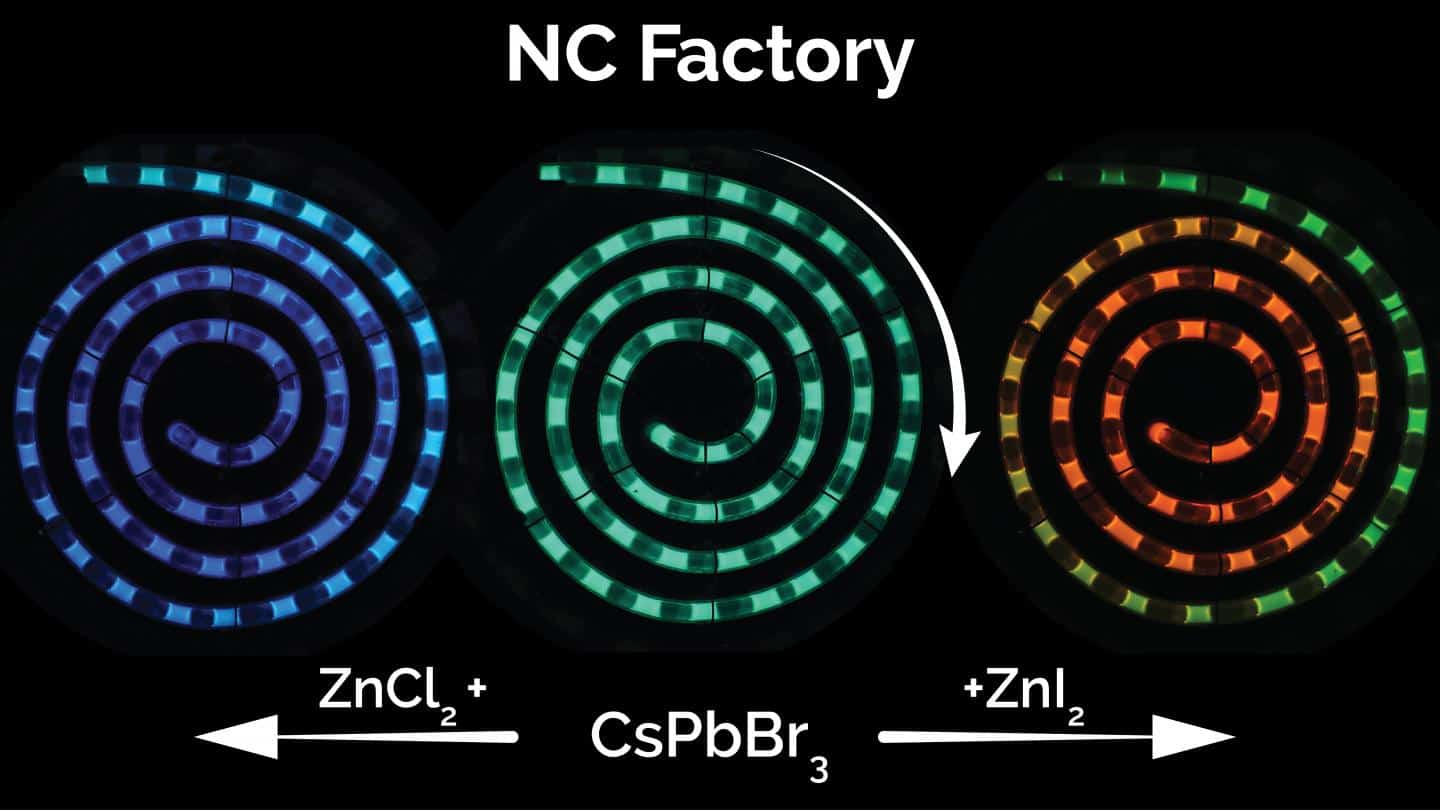Quantum dots are assemblies of colloidal semiconductor crystals which have properties colluded with light, and have found use in fields as diverse as biological sensing, imaging, LED displays and solar energy harvesting. They have great potential, they have to date been difficult to produce in bulk. Engineers at North Carolina State University claim that their new technique, which allows real-time process control to ensure quality, could solve this problem.

"We call this system the Nanocrystal (NC) Factory, and it builds on the NanoRobo microfluidic platform that we unveiled in 2017," said Milad Abolhasani, an assistant professor of chemical and biomolecular engineering at NC State and corresponding author of a paper on the work in the journal Advanced Functional Materials. "Not only can we create the QDs in any color using a continuous manufacturing approach, but the NC Factory system is highly modular," Abolhasani added. "This means that, coupled with continuous process monitoring, the system allows modifications to be made as needed to eliminate the batch-to-batch variation that can be a significant problem for conventional QD manufacturing techniques. Additionally, the chemistry we have developed in this work allows the perovskite QD processing to take place at room temperature."
The NanoRobo system was unveiled in 2017. At the time, Abolhasani explained that the system got around major drawback with producing nanocrystalline structures by chemical synthesis: the physics are unfavourable to scale up. NanoRobo incorporates a microfluidic channel along which a spectrograph monitoring module can move, collecting both fluorescence data, which shows what colour of light the crystal emits, and absorption data, which shows the crystal’s size and concentration and which wavelengths it absorbs, relevant for solar cell applications. This allows much faster collection of data, which in turn speeds up the discovery, screening and optimisation of semiconductor nanocrystals.
The process starts with caesium lead bromide quantum dots, which emits green light, and then replaces the bromine atoms with iodine, which moves the fluorescence towards the red end of the spectrum, or chlorine, which shifts it towards the blue end. It does this by mixing the quantum dots with the correct proportion of halide salts in solution.
The NC Factory consists of three "plug and play" modules: a pre-mixer to speed up the mixing of halide salts and quantum dots, in order to improve quality; a velocity sensor to monitor reaction times accurately, and the NanoRobo module to monitor the process.
"From a scientific standpoint, the NC Factory system allowed us to discover that this halide exchange process takes place in three stages," Abolhasani said. "That's very important for better understanding the reaction mechanism. But the system can also impact practical issues related to quantum dot applications and manufacturing."
In particular, the technique reduces the cost of manufacturing perovskite quantum dots, which is currently a part of their exploitation. More than 60% of the cost of the quantum dots is related to their manufacture.
"The NC Factory system would require far less labour to operate continuously," Abolhasani said. "We estimate that the system could cut overall manufacturing costs by at least 50 percent. It should reduce manufacturing costs of QDs for any application and should at least preserve - if not improve - the quality of the quantum dots.

Project to investigate hybrid approach to titanium manufacturing
What is this a hybrid of? Superplastic forming tends to be performed slowly as otherwise the behaviour is the hot creep that typifies hot...